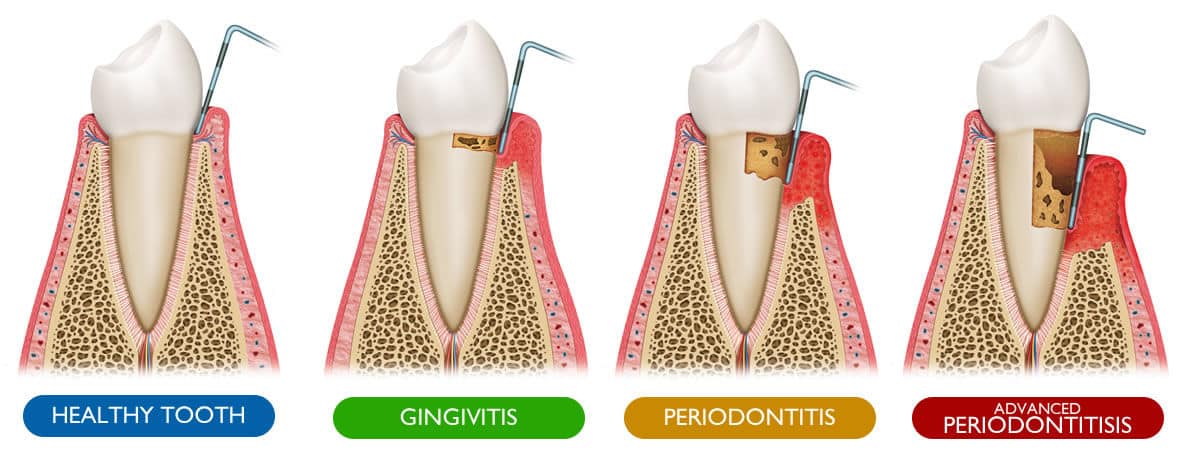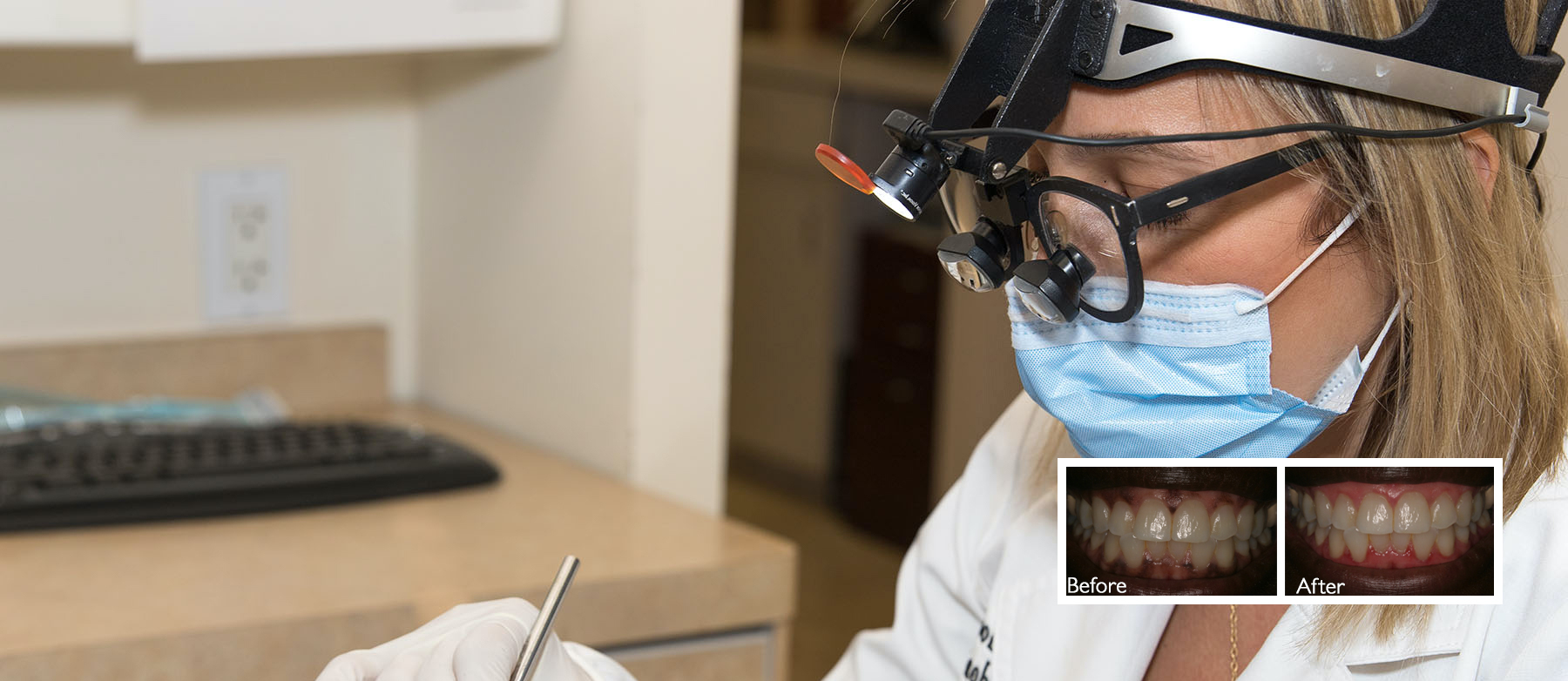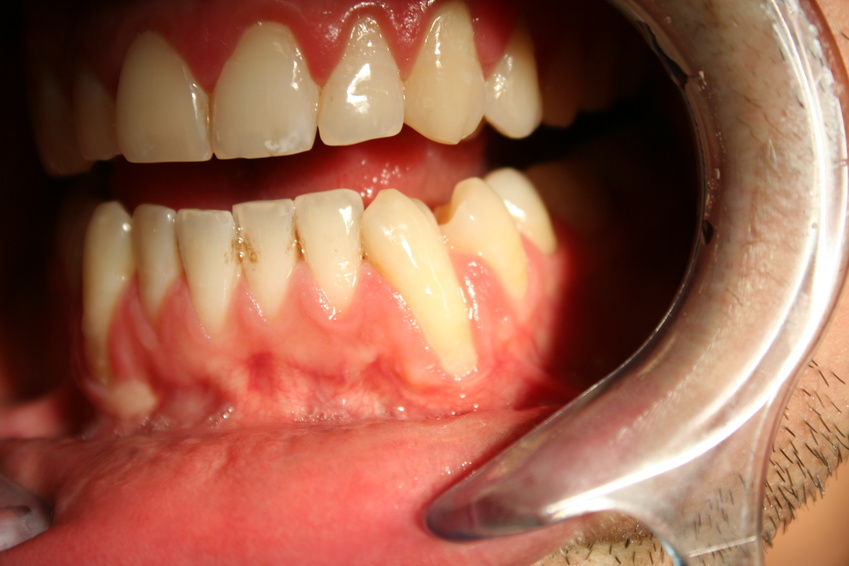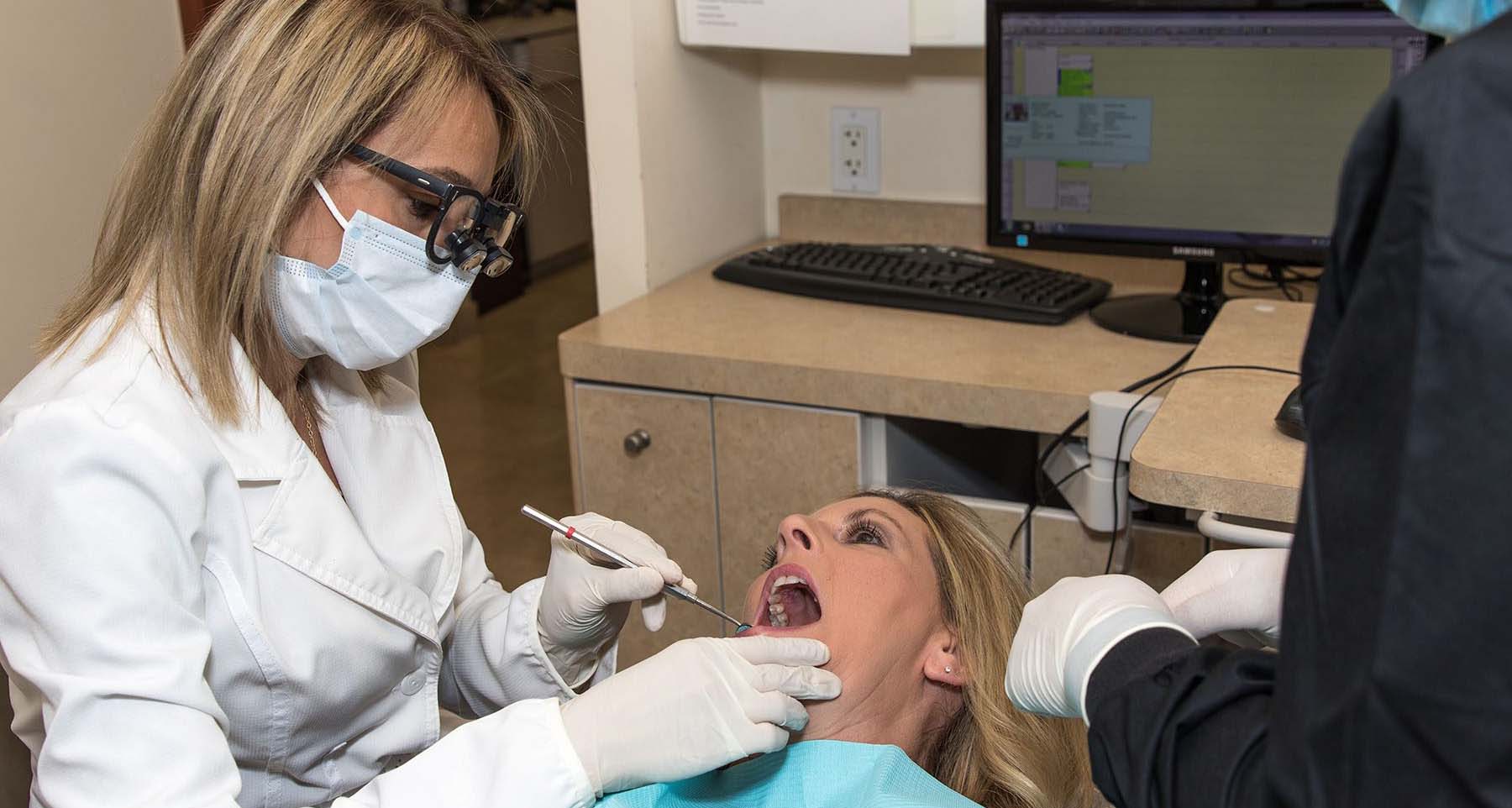Gums are often forgotten body parts. However, they need careful care, or they may succumb to periodontal disease, better known as gum disease. The bad news is that gum disease, if left untreated, can kill you. Is gum disease treatable? That’s the good news. It’s not incurable and gum disease symptoms are easily treatable.
Just how common is periodontal disease? The Surgeon General estimates that about 80 percent of all Americans over 35 suffer from some form of gum disease. It strikes people of all ages. Taking steps to prevent gum disease in teenagers and gum disease in 20s helps not only your teeth, but your bones and your whole body.
About Gum Disease, Gingivitis and Tartar
Gum disease is basically caused by bacteria left on the gums, or in the pockets trapped between the teeth and the gums. Eventually, the bacteria build up into plaque. The plaque causes tartar, which causes inflammation of the gums, which is called gingivitis. Not everyone who has gingivitis has gum disease. Think of gingivitis as the first step to gum disease.
Just what causes gingivitis differs from person to person. For some people, it may be a combination of causes. According to the Mayo Clinic, the main causes of gingivitis are:
- Poor brushing and flossing habits
- Genetic predispositions
- Certain medications like calcium channel blockers and some seizure medications
- Smoking or use of chewing tobacco
- Chronic dry mouth
- Malnutrition, especially if you do not get enough Vitamin C
- Big changes in the type and amount of hormones in the body, such as when women go through menopause
- Being over 35, as gum disease age appears mostly in older folks
- Certain major illnesses like HIV/AIDS, diabetes or leukemia.
First Symptoms of Gum Disease
Gingivitis contains the first symptoms of gum disease. How do you know when you have gingivitis? Here is a list of symptoms of a gum infection so you know when to contact a dentist for gingivitis treatment:
- Swollen gums or gums that seem puffier than usual
- Gums that bleed easily, especially when brushing or flossing
- Gums that seem to have shrunk, making the teeth seem longer
- Gums that turn darker in color
- Chronic bad breath (caused by bacteria on the gums)
- Pain or tenderness when doing usual things like eating, drinking or brushing.
Remember, the good news is that your gingivitis cure may be only one dental visit away. Who treats gingivitis? Good dentists can but you may be advised to see a gum specialist. Keep in mind that you need to keep on brushing and flossing your teeth during gingivitis treatment, despite the blood and the pain. It’s important to keep the tartar down as much as possible so you can fix gingivitis and do not get gum disease.
Complete List of Gum Disease Symptoms
Let’s say you’ve ignored how to fix gingivitis and now things have gotten worse. How do you know when you have a gum disease? What dies gum disease feel like? Here is a complete list of gum disease symptoms:
- Receding gums, or gums that seem to be shrinking
- Gums gradually turning color from pink to black
- Black bleeding gums
- Pus of any color, even grey, oozing out between your gums and teeth
- Bad breath that never seems to go away
- Plenty of pain, making it nearly impossible to eat or drink anything but lukewarm beverages. Sometimes even walking into a heated or air-conditioned room is enough to set off pain in the gums.
- Teeth get loose
- Loose gums, to the point where gums peeling off is likely.
- Tooth rot and gum rot and, if not treated, jawbone rot, which is a sure-fire way how to know if you got gum disease.
Does Gum Disease Cause Heart Attacks?
There has been plenty of news on and offline that your gum disease can cause a heart attack. That’s not entirely true. Signs of gum disease and heart disease are marked by inflammation. Whether inflammation of the gums causes inflammation of the arteries is unknown. One may not necessarily cause the other, so a gingivitis cure may not prevent heart disease.
According to Harvard Medical School, people with gum disease often get heart disease. Why this happens is not entirely known, but one theory is that the plaque in your gums gets into your bloodstream and blocks up your arteries. However, the plaque in your mouth is different from the plaque in your arteries.
How to get rid of gum disease differs for each person, but the important thing is to get started getting rid of it or it will get worse. Get help when the first sign of Gum disease symptoms appear.
How to Prevent Gum Disease
The best way to prevent gum disease is to go immediately for gingivitis treatment at the first signs of gum infection. You can also prevent gum disease by preventing gingivitis. Fortunately, most of these actions you can do yourself.
- Brush your teeth at least twice a day. If brushing hurts, choose a toothpaste specially made for sensitive teeth.
- Floss regularly. Over time, your gums will bleed less, so keep on flossing even if your gums bleed.
- Do not use chewing tobacco and if you do, stop.
- Quit smoking or do not smoke in the first place.
- See your dentist every six months for check-ups, cleaning and advice. Ask your dentist if a mouthwash or oral rinse would help keep your gingivitis in check. Usually, alcohol free types are less painful for those with sensitive teeth and gums than ordinary oral rinses or mouthwashes.
- Take care of any illnesses that may be contributing to tartar build-up. This also helps your overall health and not just your gums.
When you visit your dentist or gum specialist for a gum disease cure or for gingivitis treatment, be sure to take a list of your current medications so there is bad interaction with any medication your dentist or specialist may need to prescribe. Also include a list of any over the counter medications you take daily, even aspirin or allergy medications. The list should also include any vitamins or nutritional supplements like calcium that you are taking.
Treatment Options for Gum Disease
Treatments for gum disease depend on how far advanced your disease happens to be. You may need one or more kinds of treatments before you can achieve a cure. These include:
- X-rays to see how bad the disease is and if any teeth or bones have been compromised
- Medications such as antibiotics to kill the bacteria that causes plaque and tartar
- Scaling, where any tartar is scraped away from below your gum line. This can be painful and so needs to be done under anesthetic. Yu still will be awake for the procedure but won’t be in pain.
- Root planning or smoothing out rough spots on your teeth roots caused by tartar. This also is a procedure that goes under your gum line and needs anesthetic.
- Surgery in your gums where pockets of tartar are completely removed.
- For the worst-case scenario, bone graft surgery. This is done under general anesthesia as this is major surgery. A tiny piece of your bone, synthetic bone or donated bone is placed in the areas where gum disease has destroyed.
- Soft-tissue graft surgery to replace bad gums destroyed by gum disease.
- Pain medications for surgical procedures or gingivitis treatment.
Who treats gingivitis or gum disease? Any dentist will help you find the best treatment for your gum disease symptoms for you. You may need to go see a specialist, called a periodontist, such as our own Dr. Hanookai here at Southland Dental Care. If you live in the greater Southland Oaks area, give us a call today to check your teeth and gums.
Conclusion
Gingivitis and gum disease symptoms are serious threats to your health, so treat them seriously. Is gum disease treatable? Yes. Is gum disease permanent? No. However, you need professional help to keep your gums from getting worse. You cannot successfully treat gum disease at home. Whether you need gingivitis treatment or need to learn how to get rid of gum disease, contact Southland Dental Care today for your complimentary dental consultation.









